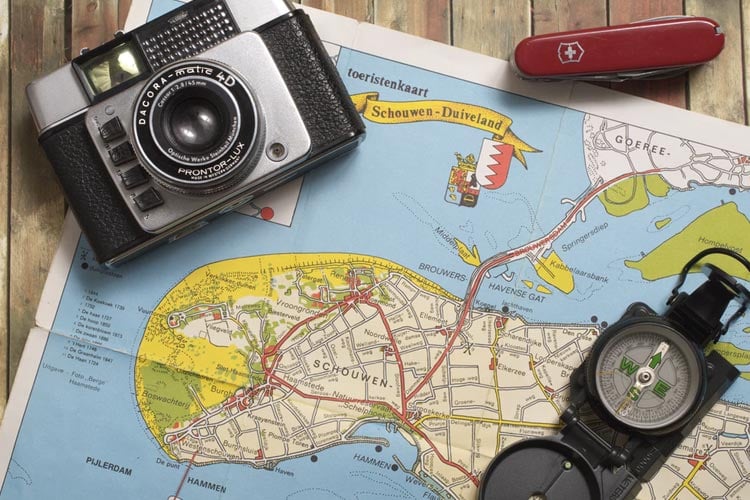A red handle, a small white cross, a blade or two, and fold-out tools for the job— a Swiss Army Knife is an icon of utility and smart design recognizable the world over. Invented in the 1880s, and today still made exclusively in only two factories in Switzerland, the pocket knives are produced in dozens of varieties at a tune of more than 15 million per year.
This summer, on a trip to Europe, I toured Swiss Army Knife factories in Ibach and Delemont, the idyll Swiss towns where pocket knives have been made for more than 100 years. Amid the pounding of machines and the bins of knife implements on the factory floor, workers assembled knife after knife to meet the world’s demand.
It was in Ibach, in 1884, where Karl Elsener and his mother, Victoria, opened a cutlery cooperative that would soon produce the first knives sold to the Swiss Army. The original model, called the Soldier Knife, was made for troops who needed a foldable tool that could open canned food and aid in disassembling a rifle. The Soldier Knife included a blade, a reamer, a can opener, a screwdriver, and oak handles.
Today, similar simple pocket knives roll continuously off the line at Victorinox A.G., the company that grew out of Elsener’s small cooperative decades back. Blades, corkscrews, files, punches, can openers, scissors, saws, and tiny toothpicks are long-time features.
Other Victorinox knives include 21st-century touches like laser pointers, USB storage drives, and fingerprint scanners with data encryption built in. All the implements, from blades to data drives, are foldable or set on springs to disappear when not in use.
In Switzerland, I traveled by train from city to city. Across the country, in the French-speaking region of Jura, I toured Wenger S.A., the other half of the Swiss Army coin.
The Delemont company, founded as a cutler in the 19th century and later modernized by businessman Theodore Wenger, shares the Swiss Army knife trademark with Victorinox. Both companies’ knives have a similar history, and both have been purchased in bulk quantities by the Swiss Army since the 1890s.
Like Victorinox, the Wenger Swiss Army Knives come in dozens of types. The company sells simple pocket knives on up to multitools like the Mike Horn Knife, a half-pound beast with two blades and a pliers. Its EvoGrip line has added ergonomic contours to knife handles. In 2006, Wenger introduced the Giant, a gargantuan, nine-inch-wide “pocket knife” with 85 implements that sells as a collector’s item for $1,400.
Wenger and Victorinox are distinct companies. But both are owned by the Elsener family, with the great-grandchildren of Karl Elsener still overseeing production and managing a business that employs thousands of Swiss workers.
In Ibach, after a tour of a factory where up to 28,000 Swiss Army Knives are made every day, I sat down with Charles Elsener, one of the great-grandchildren of the company’s founder. He pulled a couple knives from his pocket and started snapping blades and implements out for show.
Charles Elsener talked about the hidden springs on which the blades and screwdrivers snap open and closed. It was a type of this spring mechanism, invented in the original Ibach cutlery, that made Swiss Army Knives stand out 100 years back.
At my meeting this summer, Charles Elsener spoke about new implements, test products, and the science of metallurgy for making a perfect blade. From the factory below, I could hear the machines beat. It’s been 126 years in Ibach. The Swiss Army Knife machine continues to crank on.
—Stephen Regenold is founder and editor of www.gearjunkie.com.







